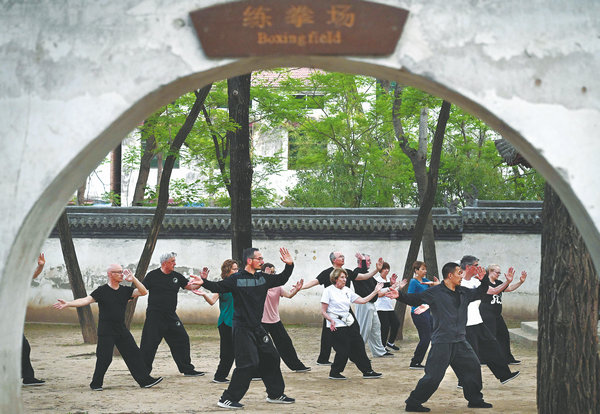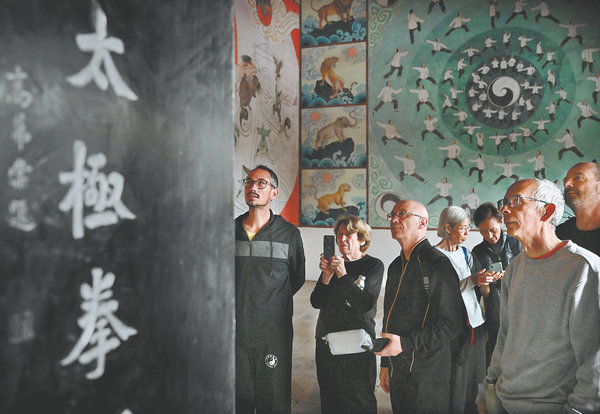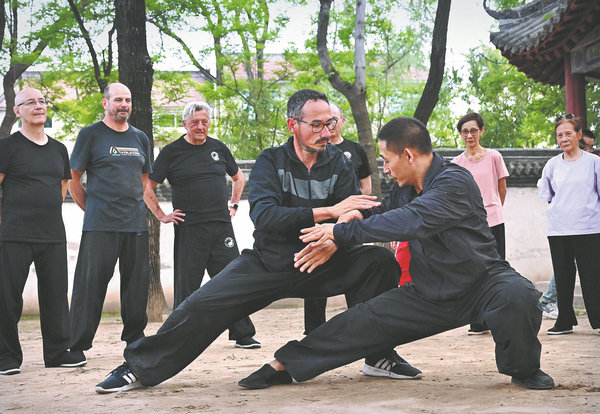


Guillaume Large (front left), Chen Ziqiang (front right) and French students practice tai chi in Chenjiagou village of Wenxian county, Central China's Henan province on April 18. [Photo by LI AN and LI JIANAN/Xinhua]
Tai chi, an ancient martial art, is widely practiced across China. Though there are no formal statistics regarding the number of tai chi practitioners in the country, the martial art can be said to have enjoyed an enduring popularity over the years.
On Dec 17, 2020, the United Nations Educational, Scientific and Cultural Organization inscribed tai chi on the Representative List of the Intangible Cultural Heritage of Humanity, which boosted the promotion of the traditional martial art around the world.
Guillaume Large, a 44-year-old tai chi enthusiast from Bordeaux of France, has been practicing tai chi for over 20 years. Large got a sports injury at a young age and decided to start practicing tai chi at a local club in France as a way of recovery. From then on, he gradually fell in love with the martial art.

Guillaume Large (left) and French students visit Chenjiagou village on April 19. [Photo by LI AN and LI JIANAN/Xinhua]
In 2007, Large and his fellows established an association, aiming to promote Chinese culture in France through teaching tai chi, the Chinese language and other aspects of the country's culture.
In 2013, he started to learn tai chi from Chen Ziqiang, the head coach of Chenjiagou Tai Chi School in Wenxian county, Central China's Henan province. Since then, he has led French students to come to study in Chenjiagou village almost every year.
"Now French people are becoming increasingly fond of Chinese culture, and I hope our relationship could get better and better," Large said.
Based on Tao Te Ching, the classic Chinese text written by Lao Tze in the late 4th century BC, the essence of tai chi lies in the conditioning of spiritual and mental aspects. The book also says that tai chi is best illustrated by the symbolic Taoist pattern: a half-black-half-white circle that represents yin and yang respectively. The message within this symbol is that what seems opposite may be interchangeable, that good may become bad, and that the powerful may lose to the weak.

Guillaume Large (front left) practices tai chi with Chen Ziqiang (front right) in Chenjiagou village on April 18. [Photo by LI AN and LI JIANAN/Xinhua]

